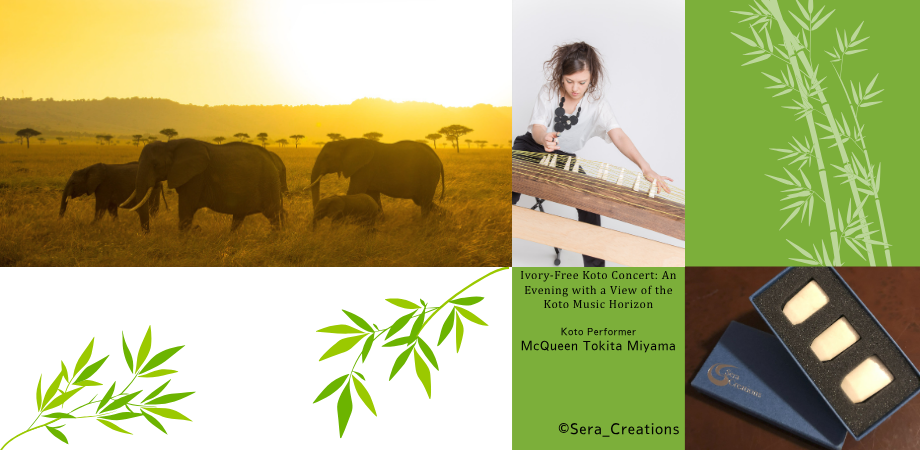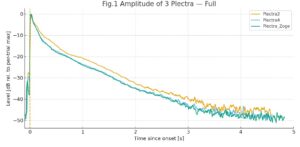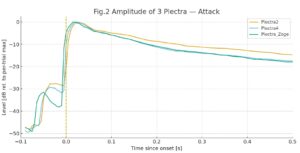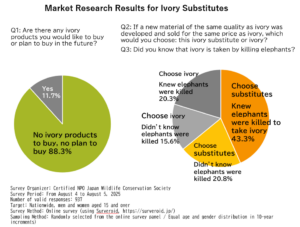Japan is home to the world’s largest legal domestic market for ivory

The international trade of ivory was banned by the Convention on International Trade in Endangered Fauna and Flora (CITES) in 1990. Even after that, poaching of elephants for ivory in Africa did not stop. As a result, elephants that once widely inhabited the African continent decreased by 70% for savanna elephants and by 90% for forest elephants between 1964 and 2016.

Savanna elephants Photo provided:Japan Tiger and Elephant Conservation Fund

Forest elephant Photo:Mikiko Hagiwara
To protect elephants from extinction, the 2016 CITES Conference of the Parties passed a resolution recommending the closure of domestic ivory markets. Major ivory-consuming countries around the world have banned the domestic ivory trade, with narrow exceptions.
The closure of domestic ivory markets in many countries has led to a decline in ivory prices and a reduction in elephant poaching and illegal ivory seizures, according to the UN agency’s report.
Some argue that “selling legal ivory would fill the market and reduce poaching.” However, poaching as a percentage of elephant deaths collected by CITES’ Monitoring the Illegal Killing of Elephants (MIKE) Program shows that poaching in Africa increased after the “one-off sales” of ivory to Japan and China under treaty control, and then decreased after China closed its domestic ivory market.
It is clear that the closure of the domestic ivory market has been effective in reducing elephant poaching.
On the other hand, the Japanese government states that “there is no evidence that the ivory trade in Japan is facilitating the poaching of African elephants or the smuggling of ivory derived from African elephants,” but in February 2025, the CITES Secretariat’s “Elephant Trade Information System (ETIS)” website announced that there was international illegal trade in which Japan was involved.
Furthermore, in June, the manager of an ivory store was arrested on suspicion of selling ivory falsely labeled as mammoth on an Internet auction.
Ivory stock in Japan totals 251 tons, which equals 37% of the world’s ivory stock (as of February 28, 2024). Therefore, there are concerns that the ivory market and inventory in Japan may trigger a resurgence in elephant poaching, and the world is calling for the closure of the domestic ivory market.
In the past, domestic and international environmental groups have often sent letters to the relevant ministers requesting the closure of the domestic ivory market, and in June, 22 bipartisan members of the U.S. House of Representatives delivered a letter to the Environment Committee of the House of Representatives and House of Councilors in Japan urging action to close the domestic ivory market. (Environmental Investigation Agency website)
And in preparation for the 20th Conference of the Parties to CITES, to be held in Uzbekistan from November 24 to December 5, 2025, a proposal has been submitted by Burkina Faso, Ethiopia, Niger, and Senegal, range states of elephants, requesting a recommendation to close Japan’s domestic ivory market.
Ivory used in Japanese musical instruments
Ivory has been partially used in Japanese musical instruments. These include the plectrums of the shamisen and biwa, which pluck the strings, the tsume (plectrums) of the koto, and the koto-bridge, which supports the strings. Although inexpensive plastic products are also available, ivory is preferred by professional players who are particular about sound.
However, international trade of ivory has been prohibited since 1990 under the CITES. Furthermore, a recommendation to ban domestic ivory trade was adopted in 2016. Therefore, people involved in Japanese traditional music were concerned that ivory would become difficult to obtain in the future.
Under these circumstances, koto tsume made of an alternative material to ivory were developed to meet the demands of professionals. Especially for overseas koto players who cannot bring ivory items into Japan, this product has been long awaited.
Acoustic Measurement of Koto Tsume Using New Material
Sera Creations has been working on the development of ivory substitutes for Japanese musical instrument items for the past 10 years, and has made many prototypes with the cooperation of professional performers and acoustic researchers. Now we have measured the acoustics of the finished product.
The measurements were taken of the sound produced by koto tsume blended with cellulose nanofibers made from bamboo. Below is a graph showing the measured acoustics of product numbers 2 (orange line) and 4 (sky blue line), and the one made of ivory (blue line), all with different material compositions.
From this graph, it can be seen that product number 4 in particular has a sound very similar to that of ivory.

©︎Sera_Creations
Figure 2 magnifies the beginning of the sound production.

©︎Sera_Creations
Japanese Consumers Choose Ivory Alternatives
The Japan Wildlife Conservation Society (JWCS) conducted market research via an internet survey in August. The results are as follows.
・88.3% answered “There is no ivory product that I want to buy or will buy in the future”
・64.1% answered “If a new material of the same quality as ivory was developed and sold at the same price as ivory, I would choose ivory substitute”
・63.6% answered “I knew that elephants are killed to get ivory”
・People who chose ivory over the alternatives were more likely to be unaware that elephants were being killed, while people who knew that elephants were being killed were more likely to choose the alternatives. (Significant difference at 1% level of significance)
The results of this survey indicate that the demand for ivory in Japan is low and that closing the domestic ivory market would have little impact, and that ivory substitutes were chosen by a majority of respondents, indicating the possibility that substitutes would be chosen even more if they knew that elephants are being poached.

New values proposed by “Ivory-free Koto Concert”
Professional koto players have been using ivory koto tsume in their concerts. Therefore, “Ivory-free Koto Concert”, which uses koto tsume and koto bridges made of new materials, has three purposes.
(1) To propose an ivory substitute made of a new material that can make the tone of ivory koto tsume.
(2) To propose a new culture that responds to the changes of the times, and to shift from the value system that has regarded the tone produced by ivory as the best.
3) Collaboration with traditional percussion instruments from Africa, where elephants live, to raise awareness of where ivory comes from, and to propose that Japanese traditional music can be connected with countries and people who seek a ban on ivory trade in the world by not using ivory.
The sound of the professional performers will appeal to the hearts of those who listen to these proposals.
◆More details about the concert here
Tokyo Event October 2025
